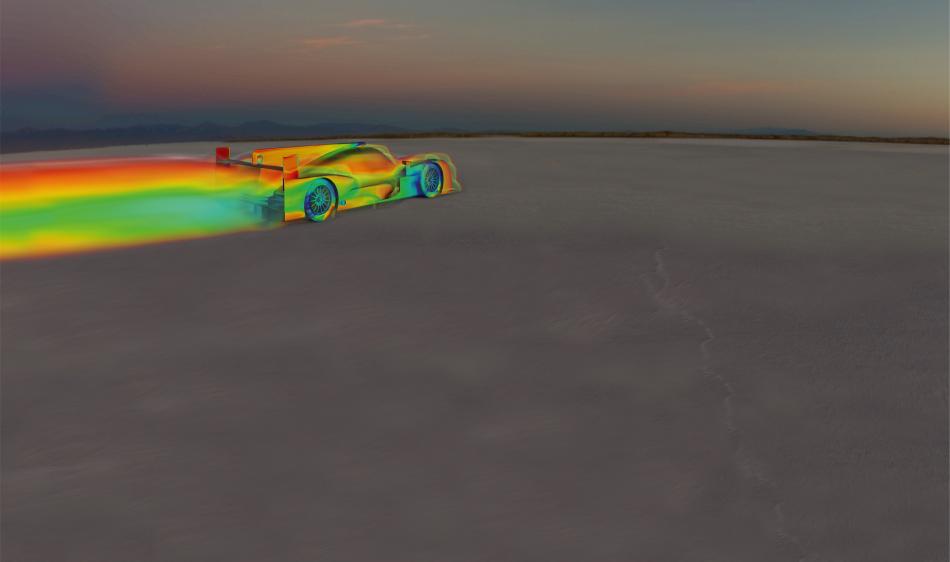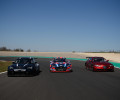From Auto #18: Launch experts
The FIA is working with computer simulation specialists to find solutions that will further prevent car launches in LMP1 and other high-speed categories

Click here to read the full Auto #18 magazine.
A sudden spin can be disastrous in motor sport. A good result can be lost and reputations ruined in the blink of an eye. But in the case of LMP1 cars, a high-speed spin can make the risk of a violent airborne crash a distinct possibility.
The danger of an LMP1 or other high-performance machine going airborne due to a sudden change in the forces acting on the car at top speed has been an occasional and dramatic problem for sports car drivers in the past. As a result of that risk, huge progress has already been made in recent years to try to prevent these sudden launches, with devices such as the shark fin engine cover, aerodynamically sculpted rear areas and special holes around wheel-arches introduced via regulation updates. But the sudden airborne scenario remains a danger that is never far from the minds of drivers racing in the LMP1 category of the World Endurance Championship at Le Mans and other famous high-speed circuits around the world, and so the FIA is continuously working to limit the risk of such accidents. This is why the governing body recently joined forces with the Global Institute for Motor Sport Safety to conduct a new study to further minimise the risk of LMP1 cars taking off in the event of a spin or accident.
“We needed to accurately understand the conditions that lead to high lift force and ultimately take-off, especially with regard to Le Mans prototype-style cars,” says Bernard Niclot, FIA Technical Director. “These cars can become unstable especially as the car is spun around in high-speed, high-velocity situations and we wanted to shift upwards the critical speed at which these aerodynamic instabilities occur, so that we minimise the likelihood of any further such instances.”
To help with this the FIA enlisted the expertise of leading simulation software provider Exa, which works with top automotive manufacturers including Tesla, Jaguar Land Rover, BMW, Ford and Volkswagen. Exa’s software is used to quickly and accurately predict, and – in the case of this study – recreate real-world conditions using
aerodynamic and thermal management simulations. To complement Exa’s software, a neutral LMP1 chassis was used for a new study to fairly represent all the manufacturers currently competing in the category. The simulations that were conducted recreated the most severe cases of cars spinning when previously running in straight-line situations and then becoming airborne, and were based on previous real-life incidents. Part of the challenge of the study, according to Stéphane Létot, Exa’s Managing Director Western Europe, was to get precise results from the software as it recreated the dramatic conditions – very high speeds or yaw rates – that LMP1 cars encounter when racing flat out.
“These extraordinary conditions combined with the unusual, edgy shape of the race car made the transient full vehicle simulation very complex and challenging,” says Létot. “So to provide the expected results with pinpoint accuracy, we had to utilise the broadest parameters of our simulation code as well as put in the broad experience of our and the FIA’s engineers. We can certainly say that this study leveraged the full capabilities of our software.”
Before the study took place active aerodynamic systems were considered, but the simulation software found that passive solutions are equally effective. As a result, the FIA has modified the LMP1 regulations for the 2017 World Endurance Championship season to try and reduce the risk of cars suddenly becoming airborne. This is achieved via the removal of legality panels on the front of the car. Another potential solution, which is still being considered by the manufacturers, is a new series of panels that would block the air passing over the floor of a car and through its rear diffuser to make sure it remains on the ground in the event of a high-angle spin.
“This would be a huge improvement,” says Niclot. “Now we have to find exactly how we implement it in real life. We are very happy with what we have been able to achieve from our cooperation with Exa.” Thanks to the accurate results that were produced during the simulations, the LMP1 manufacturers positively accepted what was revealed. The FIA is now planning to conduct further research with Exa to improve the look of future LMP1 cars.
“Due to the accuracy of the results, the project concluded with the manufacturers having full confidence in the methodology used by the FIA and in Exa’s expertise in the field,” Niclot adds. “Everyone acknowledged the success of the collaborative effort, and that shows great promise for cooperation on further projects in future.”

 Facebook
Facebook Twitter
Twitter






